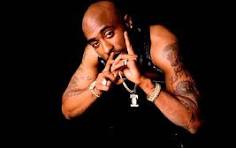
Tupac Shakur, better known as 2Pac, remains one of the most influential figures in the history of music, culture, and even social activism. Despite his tragic death at the age of 25, the impact of his work has only grown in the years since. 2Pac’s legacy continues to inspire generations of fans, artists, and activists. Through his music, his words, and his actions, 2Pac defied the conventional boundaries of what a hip-hop artist could be and has left behind an enduring legacy that transcends both his life and his death.
The Rise of 2Pac: A Star Born from Struggle
Tupac Amaru Shakur was born on June 16, 1971, in East Harlem, New York, to a family entrenched in political activism. His mother, Afeni Shakur, was a member of the Black Panther Party, and the early years of Tupac’s life were filled with the turbulence and struggle that defined the 1960s and 1970s. Raised in poverty and surrounded by violence, Tupac’s early experiences became central themes in his later work. His family moved to Baltimore, where Tupac attended the Baltimore School for the Arts, honing his skills as both a poet and an actor. It was during these formative years that Tupac met Jada Pinkett, who would go on to become a lifelong friend and confidante.
In 1991, Tupac’s career in music took off when he joined the hip-hop group Digital Underground as a backup dancer and rapper. His feature on the group’s hit single “Same Song” propelled him into the spotlight. Tupac’s first solo album, 2Pacalypse Now (1991), was released shortly thereafter, introducing the world to a voice that was unflinchingly raw, unrepentantly political, and deeply personal. Songs like “Brenda’s Got a Baby” and “Trapped” showcased his ability to address difficult subjects, such as teenage pregnancy, police brutality, and systemic poverty, topics that would become central to his musical identity.
The Controversial and Complex Artist
As Tupac’s fame grew, so did the intensity of his public persona. He became both a symbol of resistance and a figure embroiled in controversy. Known for his often volatile behavior, Tupac’s interactions with the media, law enforcement, and fellow artists frequently made headlines. The contradictions that defined his life — the poetry and the violence, the love and the hate, the activism and the criminality — created a complex figure that fascinated and frustrated people in equal measure.
In 1994, the first of several highly publicized incidents occurred when Tupac was shot multiple times in a robbery at a recording studio. While recovering from the wounds, Tupac’s interactions with the media became more combative. He became an advocate for self-determination, using his platform to speak about the realities of living in a system that seemed rigged against Black communities. In interviews, Tupac frequently delved into issues of racial inequality, police brutality, and the struggles of the urban poor. Yet, at the same time, his behavior was reckless, as evidenced by his involvement in altercations, legal troubles, and his own issues with violence.
The release of Me Against the World (1995) marked a turning point in Tupac’s career. The album was a massive commercial success and received widespread critical acclaim for its introspective themes. Tracks like “Dear Mama,” a tribute to his mother, showed a tender, vulnerable side of Tupac that was often overshadowed by his reputation as a thug. His ability to combine street toughness with emotional complexity resonated with fans who saw in Tupac a reflection of their own struggles and dreams.
In 1996, Tupac’s career reached new heights with the release of All Eyez on Me, a double album that marked his first release after signing with Death Row Records. The album featured some of his biggest hits, including “California Love,” “How Do U Want It,” and “2 of Amerikaz Most Wanted.” It was also an album that signaled his increasing involvement in the growing West Coast rap scene, particularly his relationship with Death Row Records founder Suge Knight and fellow rapper Snoop Dogg.
However, the same year that Tupac reached his professional zenith, his personal life took a tragic turn.
The Tragic Death of 2Pac
On September 7, 1996, Tupac Shakur was shot multiple times in a drive-by shooting in Las Vegas. Despite being critically injured, Tupac survived for six days before succumbing to his injuries on September 13. His death was a devastating moment for the music world and left fans and artists alike in shock. The circumstances surrounding his death have been the subject of speculation and conspiracy theories ever since, with some believing his murder was the result of the ongoing East Coast-West Coast hip-hop rivalry, while others suggest more sinister and complex motivations.
Tupac’s death marked the end of an era in hip-hop. At the time of his passing, he was at the peak of his career, and his potential seemed limitless. Yet, in many ways, his death cemented his place in the cultural consciousness as a martyr for the causes he championed: racial justice, self-expression, and the fight for empowerment in marginalized communities.
The Enduring Legacy of 2Pac
Even in death, Tupac Shakur’s influence only grew stronger. Over the years, his music has continued to resonate with fans around the world, and his message of resilience, defiance, and social justice remains as relevant as ever. His albums are still revered as seminal works in the hip-hop genre, with tracks like “Keep Ya Head Up,” “Hail Mary,” and “Changes” remaining anthems for both hip-hop lovers and social activists alike.
The posthumous release of albums such as The Don Killuminati: The 7 Day Theory (1996), recorded under his alias Makaveli, and Until the End of Time (2001) introduced new generations to his work and further expanded his artistic legacy. His ability to address complex issues like inequality, racism, and violence, while maintaining a powerful connection with fans, ensured that his music would continue to influence new artists and cultural movements. Moreover, his powerful lyricism inspired the evolution of conscious rap, which would find its place in the broader hip-hop movement in the years following his death.
Tupac’s impact went far beyond music, as he became a symbol of resistance for many disenfranchised groups, particularly within the African American community. His political activism and his unapologetic stance on issues of racial injustice and economic inequality made him a figure of reverence for activists and social movements. Tupac’s legacy continues to be embraced by those advocating for systemic change, as his work remains relevant in the ongoing fight against racial inequality, police violence, and the struggles of urban communities.
Moreover, Tupac’s influence can be felt in the music of countless artists who have cited him as an inspiration, from Nas and Jay-Z to Kendrick Lamar and J. Cole. His commitment to lyrical storytelling, poetic introspection, and addressing societal issues has shaped the way that modern hip-hop artists approach their craft.
The Myth of 2Pac: The Enduring Mystique
Even the circumstances surrounding Tupac’s death have fueled his enduring legacy. The many conspiracy theories regarding his death have added to the mystique of his persona, with some fans believing that Tupac faked his death in order to escape the pressures of fame and continue his activism from the shadows. While there is no evidence to support such claims, the idea of 2Pac’s resurrection has become part of his legend, adding to the sense that his influence continues to transcend his earthly existence.
2Pac’s life and death have become emblematic of the struggles of an entire generation, one that lived through economic hardship, institutional racism, and a lack of opportunity. Yet, his legacy is also about something much greater: the pursuit of freedom, self-expression, and the relentless desire to make a difference, regardless of the odds.
Conclusion
Tupac Shakur’s life was cut short, but his legacy remains immortal. His work continues to inspire and challenge us to think critically about the world we live in and the role we all play in shaping it. Through his music, his activism, and his untamed spirit, Tupac showed that the fight for justice, freedom, and love will never die. In death, as in life, Tupac remains a symbol of hope, a reminder that the pursuit of truth and justice is eternal, and that our voices, like his, can echo through history, long after we are gone.





